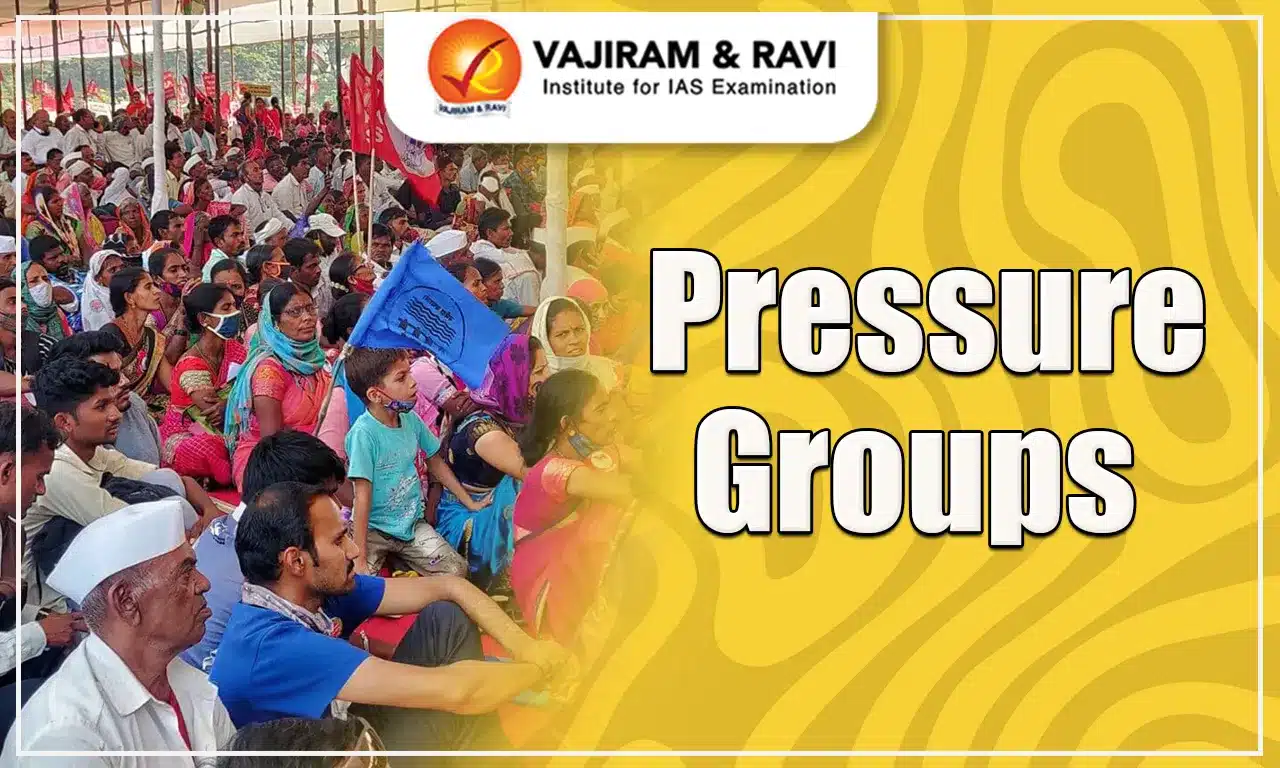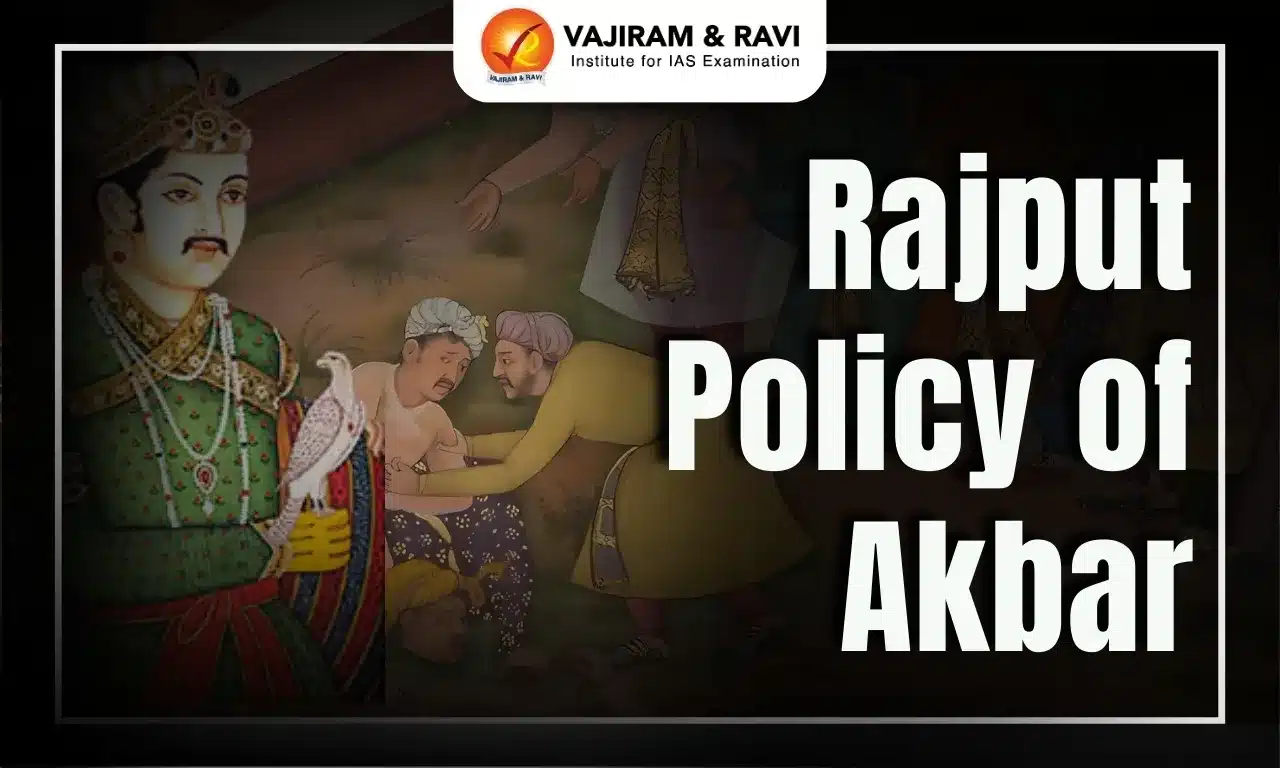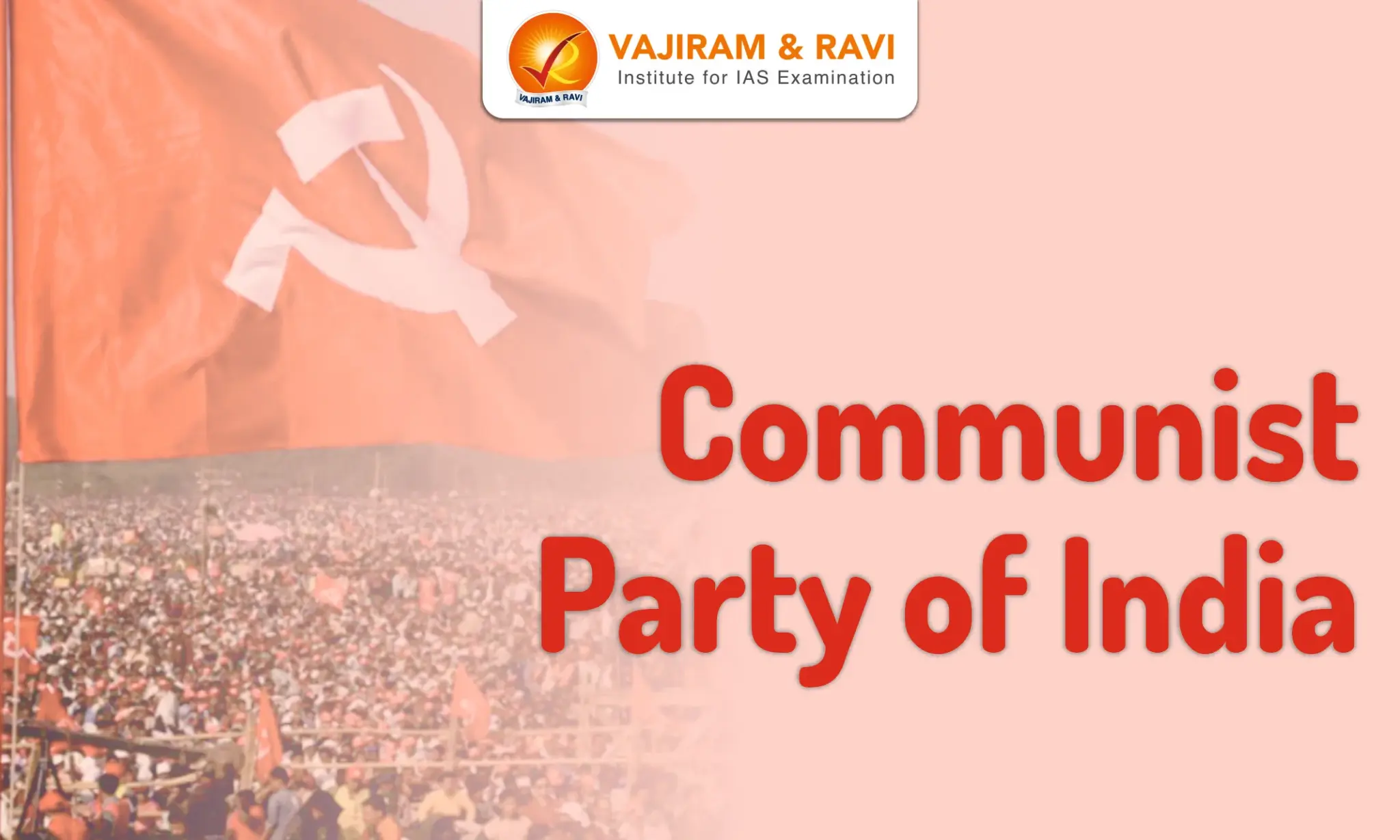What are Pressure Groups?
Pressure Groups are organized groups that directly or indirectly influence politics and government.
- The members of such organized groups are united regarding some specific interests they tend to advance. For example, the workers of a factory are organized in what is called a trade union to promote their interests.
- They influence policy-making and policy implementation in the government through legal or legitimate methods like lobbying, correspondence, publicity, propagandizing, petitioning, public debating, maintaining contacts with their legislators, etc.
What are the characteristics of Pressure Groups?
- External to the Government: Pressure groups do not make policy decisions but try to influence those who do (the policy-makers). In that sense, they are ‘external’ to the government.
- Based on certain objectives: Pressure groups exist to protect the common interest of members.
- Voluntary Funding: To carry out their activities, pressure groups depend on contributions from members through levies, donations, and dues, including support from other sources who appreciate their cause.
- Organized Structure: Pressure groups are well organized. Large pressure groups may have branches coordinated from the headquarters by effective leaders.
- Membership: Because members are bound together by common professions and other interests, pressure groups rarely recruit members. So their membership is limited by profession, location, religion, or other common interests.
What are the different types of Pressure Groups?
There are four types of Pressure groups:
- Associational Groups: They are expert groups to present their self-interest claims. These are formally organized in the form of registered bodies.
- Examples: Trade Unions such as AITUC (All India Trade Union Congress), Teachers Associations, etc.
- Non-Associational Groups: Kinship, lineage, ethnic, regional, status, and class groups that articulate interests based on individuals, family, and religious heads. These groups have an informal structure.
- Institutional Groups: This group comprises people from any profession. Such a group may intend for the interests of its members or any other group.
- Examples: IAS Association, IPS Association, State civil services association, etc.
- Anomic Groups: Such pressure groups usually originate from a particular event. Pressure groups of this kind naturally express their dissatisfaction by creating pressure on the country’s political system through protests, riots, assassinations, etc.
| Pressure Groups | Examples |
| Business Groups |
|
| Trade Unions |
|
| Professional Groups |
|
| Agrarian Groups |
|
| Student Organisations |
|
| Religious Groups |
|
| Caste Groups |
|
| Tribal Groups |
|
| Ideology-based Groups |
|
| Anomic Groups |
|
What are the various methods employed by Pressure Groups?
To achieve their objectives and goals, pressure groups employ various techniques and methods, which include peaceful persuasion as well as pressure techniques. Some of the techniques are
- Lobbying: It involves representatives of pressure groups trying to persuade public officers to adopt and enforce the policies that they think will prove most beneficial to their interests.
- Electioneering: It aims at placing in public office persons favorably disposed towards the interests of the pressure group.
- Propagandizing: In this technique, public opinion is influenced and thereby gains an indirect influence over the government.
- Demonstrations: Pressure groups also use demonstrations that may be peaceful or violent. For example, the Self-Employed Women's Association has influenced the government to improve its policies on the rights of women workers.
- Letters and petitions: Pressure groups write letters of information or complaints to officials of the legislative or executive arm of the government to try to convince them of their viewpoint.
- Publicity campaigns: Pressure groups organize intensive campaigns through meetings, rallies, house-to-house campaigns, posters, handbills, stickers, and conferences to attract public support and achieve their aims.
What are the positive outcomes of the pressure groups?
Pressure groups promote democracy in several ways, such as:
- Mobilize public opinion: Pressure groups keep the government in touch with public opinion in-between elections.
- Accountability of government: Pressure groups shore up the accountability of the government and serve as a vital check on government actions and inaction.
- Example: Mazdoor Kisan Shakti Sangathan led the people’s movement, which got the government to bring the law on ‘Right to Information’.
- Giving voice to Minorities: Pressure groups give a political voice to minority groups and articulate concerns that political parties overlook.
- Raising diverse issues: Pressure groups are often more effective in articulating concerns about issues such as the environment, civil liberties, global poverty, violence against women, and the plight of the elderly.
- Example:Women’s organizations like SEWA have campaigned for women-friendly laws.
- Widen political participation: Pressure groups have become increasingly effective agents of political participation. Not only have single-issue politics proved to be popular, but the grassroots activism and decentralized organization of many campaigning groups have proved to be attractive to many young people.
- Promotes political education: Pressure groups promote political debates, discussions, and arguments. In doing so, they create a better-informed and more educated electorate.
What are the limitations of Pressure Groups?
Sometimes pressure groups are criticized for being undemocratic because they intervene in the political process, which is based on electoral accountability.
Some ways in which pressure groups challenge democracy are:
- Increase political inequality: Pressure groups tend to empower the already powerful. Therefore, they increase political inequality. In practice, the most powerful pressure groups tend to be the ones that possess money, expertise, institutional leverage, and privileged links to the government.
- Exercise non-legitimate power: Unlike conventional politicians, pressure-group leaders are not elected. Pressure groups are, therefore, not publicly accountable. This problem is compounded by the fact that very few pressure groups operate based on internal democracy.
- Propagating extremism: Pressure groups can allow too much influence over the government from unelected extremist minority groups, which in turn could lead to extremism.
- Narrow selfish interests: Pressure groups in India are organized around religious, regional, and ethnic issues leading to pursuing vested interests.
Despite their limitations, pressure groups play a crucial role in a democratic system. They can advance the common good and provide a counterbalance to electoral politics. They can drive social progress and hold politicians accountable. They can foster political engagement and ensure a robust political culture. Therefore, the presence of authentic pressure groups is a vital component of democratic societies such as India.
What steps are necessary to improve the working of Pressure Groups in India?
Some steps that can be taken to improve the working of the pressure groups are:
Developing a legal framework for registering and regulating pressure groups: This could include requiring groups to disclose information about their funding, membership, and activities and establishing penalties for groups that violate the rules.
- Establishing a regulatory body to oversee pressure groups: This body could be responsible for enforcing the rules, investigating complaints, and guiding groups on how to comply with the regulations.
- Encouraging self-regulation: Pressure groups could be encouraged to adopt codes of conduct and ethical guidelines to promote transparency and accountability.
- Monitoring the media: Pressure groups can monitor the media for accuracy and bias and provide accurate information about political issues to the public.
What are some of the global best practices that India can learn from to improve the role of pressure groups?
- USA: Lobbying Disclosure Act of 1995 is a statute enacted by the United States Congress to reduce the influence of lobbyists. This helps in better regulation of the pressure groups with regard to lobbying.
- UK: In the UK, The Charities Act 2011 exclusively regulates charitable institutions where they are required to disclose their funding in annual reports and must not engage in political campaigning that does not align with their charitable purposes. Whereas in India, Foreign Contribution Regulation Act 2010, an umbrella legislation regulating foreign contribution, regulates charitable organizations’ funding.
Last updated on January, 2026
→ Check out the latest UPSC Syllabus 2026 here.
→ Join Vajiram & Ravi’s Interview Guidance Programme for expert help to crack your final UPSC stage.
→ UPSC Mains Result 2025 is now out.
→ UPSC Notification 2026 Postponed for CSE & IFS which was scheduled to be released on 14 January 2026.
→ UPSC Calendar 2026 has been released.
→ UPSC Prelims 2026 will be conducted on 24th May, 2026 & UPSC Mains 2026 will be conducted on 21st August 2026.
→ The UPSC Selection Process is of 3 stages-Prelims, Mains and Interview.
→ Prepare effectively with Vajiram & Ravi’s UPSC Prelims Test Series 2026 featuring full-length mock tests, detailed solutions, and performance analysis.
→ Enroll in Vajiram & Ravi’s UPSC Mains Test Series 2026 for structured answer writing practice, expert evaluation, and exam-oriented feedback.
→ Join Vajiram & Ravi’s Best UPSC Mentorship Program for personalized guidance, strategy planning, and one-to-one support from experienced mentors.
→ UPSC Result 2024 is released with latest UPSC Marksheet 2024. Check Now!
→ UPSC Toppers List 2024 is released now. Shakti Dubey is UPSC AIR 1 2024 Topper.
→ Also check Best UPSC Coaching in India
Pressure Groups FAQs
Q1. How do pressure groups differ from political parties? +
Q2. Can Pressure Groups pose a threat to National Security?+
Tags: pressure groups quest

















